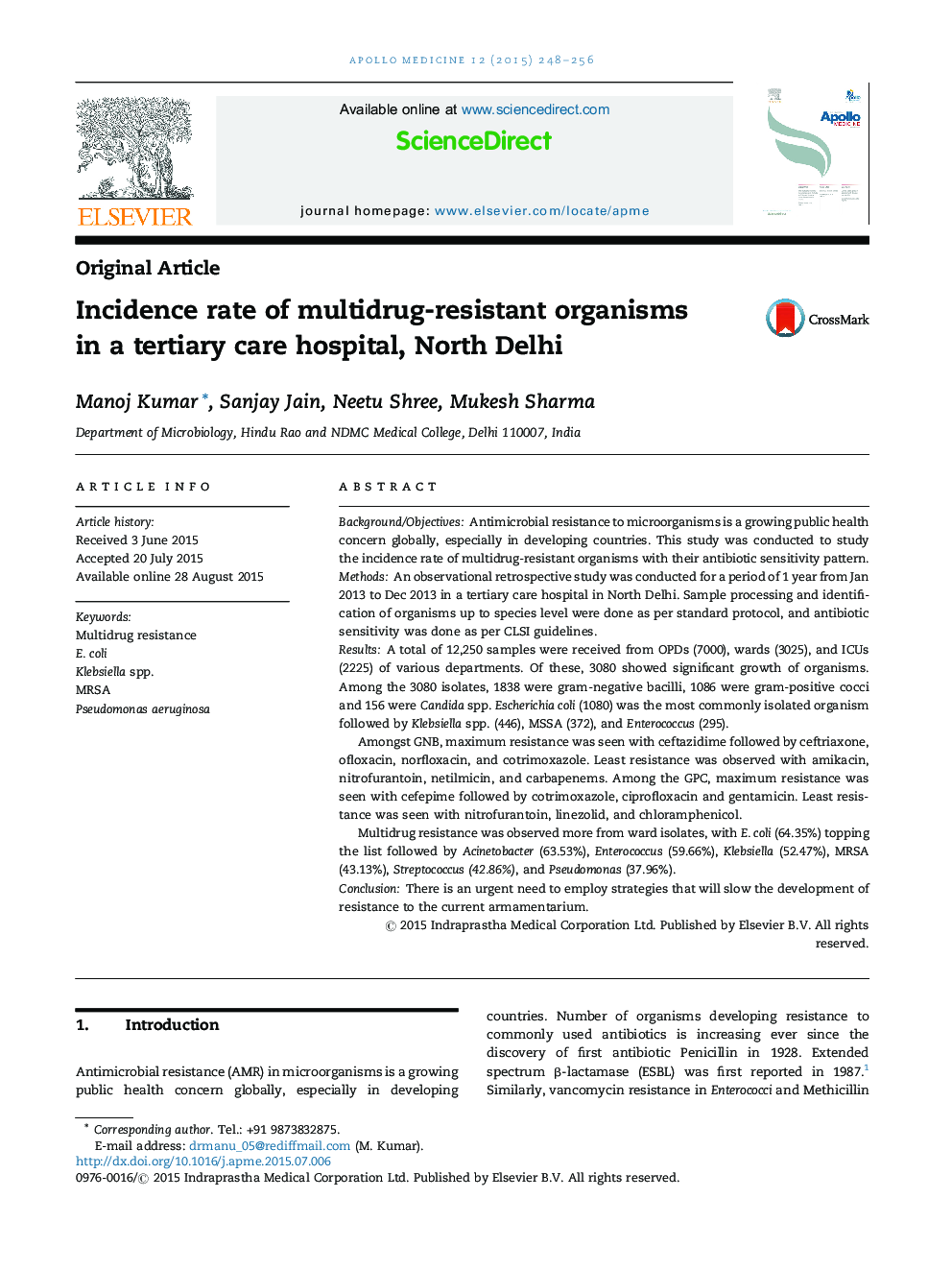| کد مقاله | کد نشریه | سال انتشار | مقاله انگلیسی | نسخه تمام متن |
|---|---|---|---|---|
| 3234818 | 1205429 | 2015 | 9 صفحه PDF | دانلود رایگان |
Background/ObjectivesAntimicrobial resistance to microorganisms is a growing public health concern globally, especially in developing countries. This study was conducted to study the incidence rate of multidrug-resistant organisms with their antibiotic sensitivity pattern.MethodsAn observational retrospective study was conducted for a period of 1 year from Jan 2013 to Dec 2013 in a tertiary care hospital in North Delhi. Sample processing and identification of organisms up to species level were done as per standard protocol, and antibiotic sensitivity was done as per CLSI guidelines.ResultsA total of 12,250 samples were received from OPDs (7000), wards (3025), and ICUs (2225) of various departments. Of these, 3080 showed significant growth of organisms. Among the 3080 isolates, 1838 were gram-negative bacilli, 1086 were gram-positive cocci and 156 were Candida spp. Escherichia coli (1080) was the most commonly isolated organism followed by Klebsiella spp. (446), MSSA (372), and Enterococcus (295).Amongst GNB, maximum resistance was seen with ceftazidime followed by ceftriaxone, ofloxacin, norfloxacin, and cotrimoxazole. Least resistance was observed with amikacin, nitrofurantoin, netilmicin, and carbapenems. Among the GPC, maximum resistance was seen with cefepime followed by cotrimoxazole, ciprofloxacin and gentamicin. Least resistance was seen with nitrofurantoin, linezolid, and chloramphenicol.Multidrug resistance was observed more from ward isolates, with E. coli (64.35%) topping the list followed by Acinetobacter (63.53%), Enterococcus (59.66%), Klebsiella (52.47%), MRSA (43.13%), Streptococcus (42.86%), and Pseudomonas (37.96%).ConclusionThere is an urgent need to employ strategies that will slow the development of resistance to the current armamentarium.
Journal: Apollo Medicine - Volume 12, Issue 4, December 2015, Pages 248–256
